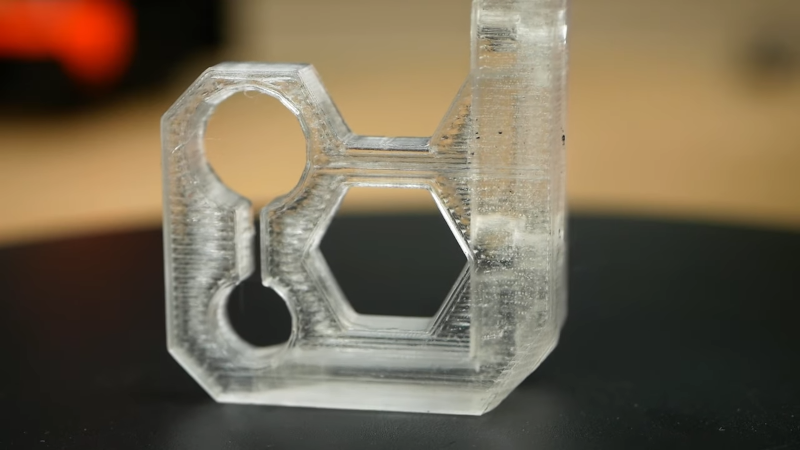We always look forward to [Stefan’s] CNC Kitchen videos. They are usually useful, but always carefully thought out and backed with experimental data. His latest is about creating transparent and strong FDM prints. You normally don’t associate the FDM process with clear prints even with clear filament. The problem is the filament doesn’t lay down in a particular structure, so light scatters producing a sort of white color. However, [Stefan] found a post on Printables called “How to Print Glass” which changes the structure of the part and, of course, [Stefan] wanted to see if the process also led to stronger parts.
The process is slow and the basic idea is to use no top and bottom layers. The entire part is essentially infill. You also need to set the infill to go in the same direction for each layer. As [Stefan] mentions, there have been other efforts to make transparent parts, especially in vase mode. Of course, you can also get transparent parts using resin printing, although it isn’t always as easy as you might think.
[Stefan] got good results using PCTG, but because it isn’t as common as PETG, he used that more common material in his tests. The tests were systematic and show the impact different slicer parameters have on the finished product.
The interesting byproduct of the testing is that the same slicer parameters that help the parts be transparent also lead to very strong parts. If you are interested in either clear parts or strong parts, give the video a watch.
As [Stefan] pointed out, the technique itself isn’t new. You can also get filament specifically made to create transparent parts.
















https://www.printables.com/de/model/15310-how-to-print-glass/comments/333184#
His parameters are note optimal :
You have to : Optimize parameters – higher temp – more extrusion – lower speed – one Direktion print . No Top and bottom layers :
20x20x20mm print , clear like glass.
The print is clear , when no light is refracted.
Impressive result
And … use bigger nozzle, at least 0,6 mm
If you look carefully in the video light refracts right of the prints…its a fact that light refracts of any surface….
I’ll stick with my resin. https://photos.app.goo.gl/mePqT2oc2ibCwGXP7
That is really good. Do you think after fully cured is it safe to put in a fish thank?
https://fenneclabs.net/index.php/2018/12/09/3d-printing-transparent-parts-using-fdm-fff-printer/
A more comprehensive study from Fennec Labs predates both Stefan and the Rygar post, which primarily used transparent ABS and some very, very, *very* dedicated sanding. Possibly even cardboarding.